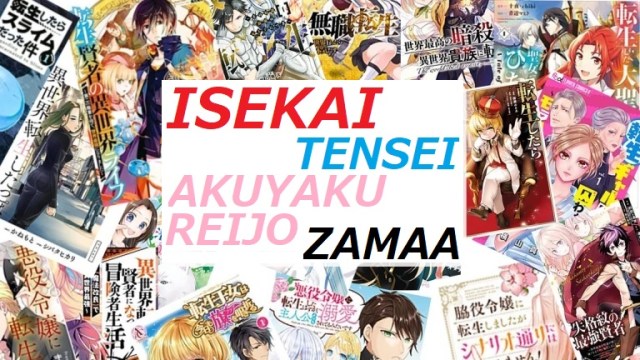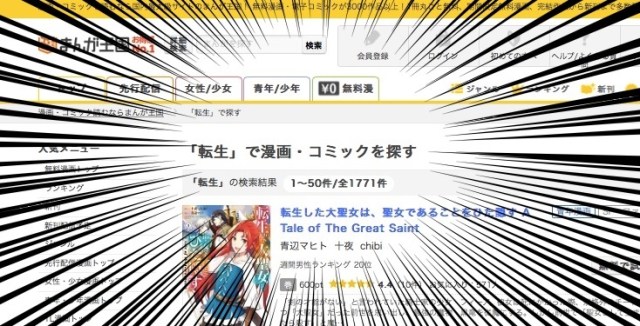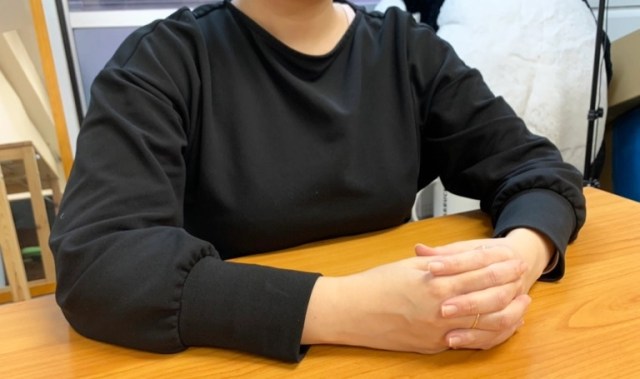
We sit down for an interview with an industry pro and learn about “zamaa-style” manga too.
Isekai, or alternate world stories, have become one of the most popular anime/manga genres, so much so that there are now a number of recognizable isekai subgenres.
For example, there’s the tensei (“reincarnation”) genre, where someone from our world doesn’t just get whisked off to another one, but dies and is reborn there as a different person, but with their real-world memories intact. There’s also the akuyaku reijo (“high-class young villainess”) category, itself a subgenre of tensei, where the main character is reborn as a powerful figure in the alternate world who’d usually be an isekai story’s antagonist.
On a whim, our Japanese-language reporter Mariko Ohanabatake decided to put “tensei” into the search function of Manga Okoku, a popular digital manga publishing site in Japan. She got back…

1,771 results, and doing the same for “akuyaku reijo” got her another 365!
But why are reincarnation and villainess stories so popular? To find out, Mariko sat down with veteran manga editor Y-san (not her real name). Y-san has been working as a manga editor at a major publisher for more than 10 years, editing series that have gone on to win awards and have anime adaptations, and here’s what she had to tell us.
Mariko: Is there a specific title that kicked off the current tensei boom?
Y-san: I think That Time I Got Reincarnated as a Slime becoming a hit was a major turning point. The series started as a web novel on the site Shosetsuka ni Narou (“Let’s Become Novelists”), and once it got popular there, it got turned into a manga. There are a lot of reincarnation stories on the site, so many that some people also call tensei stories “Narou stories.”
In the industry, we used to have a lot of time travel stories, or teni (“transfer”) stories, where someone would go to a different time or place while still retaining their original appearance and identity. But the tensei stories that are in vogue now are different in that the main character dies in our world, then they awaken in a different world as a different person, but with their real-world memories intact.
Mariko: In tensei stories, when they get to the alternate world they look different and have a completely new lifestyle, don’t they?.
Y-san: I think the reason for that is to appeal to readers who want to become a different person than they are now and redo their life. It’s a frequent characteristic of tensei stories that the main character’s real-world background and what kind of person they were before coming to the alternate world aren’t treated as being very important.
▼ Y-san

Mariko: Yeah, I’ve noticed that they don’t really go into much depth about those kinds of things.
Y-san: Usually there are just a few quick pages at the start of the first chapter about the main character’s life in our world, then they die and we get to the start of the story in the alternate world. There’s not much weight given to the kind of person they were or what kind of upbringing and experiences they had in our world. I think they just want to establish, as quickly as they can, ‘Ok, here’s this person…now he’s dead…and now he’s starting a new life.’ I’m sometimes surprised at how little need the story seems to have for readers to sympathize with the main character while they’re still in the real world.
Mariko: What about villainess reincarnation stories? I notice a lot of comics aimed at women recently where the main character was a timid person in the real world, and I can understand the desire to be reborn as a more powerful person, but why a villainess?
Y-san: Well, for a long time, the standard pattern in shojo manga has been that the main character is eventually rewarded for being purehearted and earnest. But with the advancement of social media, I think that messier, more realistic emotions and romance have become more visible, and that some people are tired of such purehearted main characters.
Mariko: I think there aren’t many people who can live their lives like a pure, earnest shojo heroine.
Y-san: But in contrast, a powerful villainess can be forcefully bold and tell off people she doesn’t like. I think that’s something people find appealing. Stories where the villainess breaks off an engagement are popular too. It might be a result of empathizing with that desire to be free of a man’s control.
Mariko: Oh, I get it now! A rich, powerful villainess can do what she wants, and doesn’t have to mince words talking with male characters. She’s basically unstoppable.
Y-san: By the way, there’s also a new genre, often aimed at male readers, with some similarities to tensei that’s called zamaa-style.
Mariko: Zamaa-style? What’s that?
Y-san: It’s from ‘zamaa miro’ [Japanese for “serves you right”]. The main character isn’t reincarnated, but instead is someone who was kicked out of a band of heroes who didn’t think he was good enough. Then the main character joins another party and finds success, while things fall apart for the party of heroes he used to be in. It’s similar to a revenge story.
Mariko: Have you ever served as the editor for a tensei manga series?
Y-san: Not a tensei one specifically, but I’ve been involved in the planning for an isekai series. But there’s something about them that…well, if I come right out and say it, I wondered if making an isekai series was a good decision for that manga artist’s future. Even if people read the series, there’s no point for the artist if that success can’t connect to their next series. Tensei series have so many similarities to each other, so it’s hard for an individual artist to develop a fanbase for themselves through one. The readers don’t generally react with, “Now I’ll check out their other works too.”
Mariko: I guess it’s true that if you can’t tell one series apart from another in the genre, you probably won’t remember the artist’s name either.
Y-san: But on the other hand, because it’s a popular genre, it’s easier for new artists to get their pitches greenlit, and there’s a big benefit to the artist on the financial end from higher sales by nature of their series being in a popular genre. The ideal is to get readers to become fans of both the series and the artist at the same time.
Mariko: Before we wrap things up, do you have any personal tensei recommendations for us manga readers?
Y-san: Of course! My Next Life as a Villainess: All Routes Lead to Doom! (art by Nami Hidaka, story by Satoru Yamaguchi) has an interesting story and an appealing cast of characters. And it’s technically a teni story, but The Screwed-up Potions Turned Out to Be Soy Sauce, So I Cooked with Them [Hazure Poshon ga Shoyu Datta no de Ryori Suru Koto ni Shimashita] (art by Risuno, story by Fuji Tomato, and character concepts by Yuichi Murakami) is another I’m really enjoying reading. It’s got a really unique concept: a housewife gets transferred to another world and realizes that its defective healing potions are actually soy sauce, so she uses them for cooking.
Mixing fantasy alchemy and Japanese cuisine? It’s something we wouldn’t have thought up on our own, and a sign that even with as many lookalike isekai series as there are, there are still some original, interesting ideas within the genre if you know where to look.
Photos © SoraNews24
● Want to hear about SoraNews24’s latest articles as soon as they’re published? Follow us on Facebook and Twitter!

No hay comentarios:
Publicar un comentario